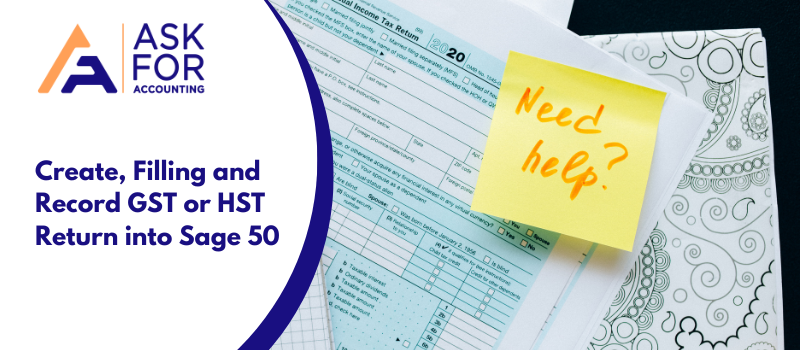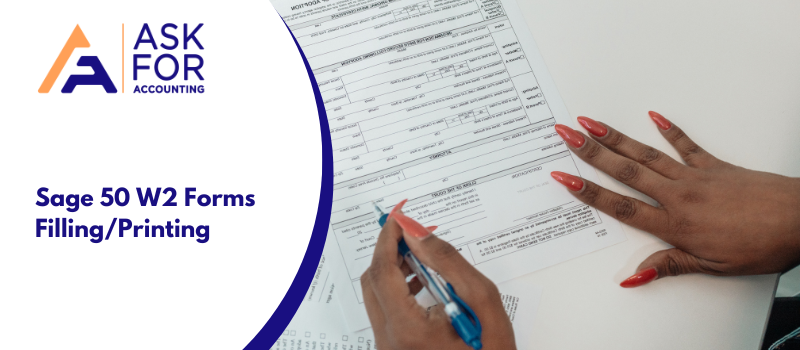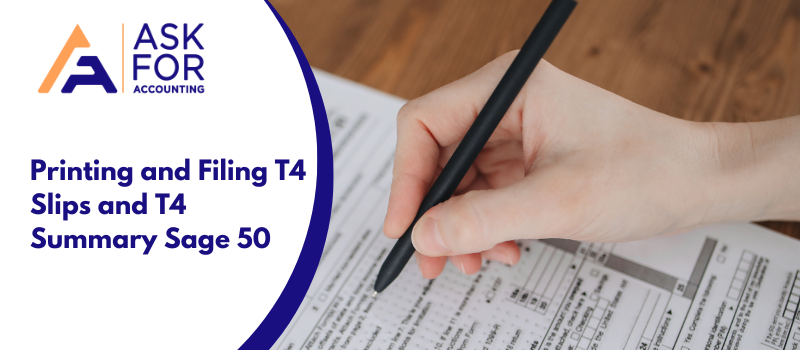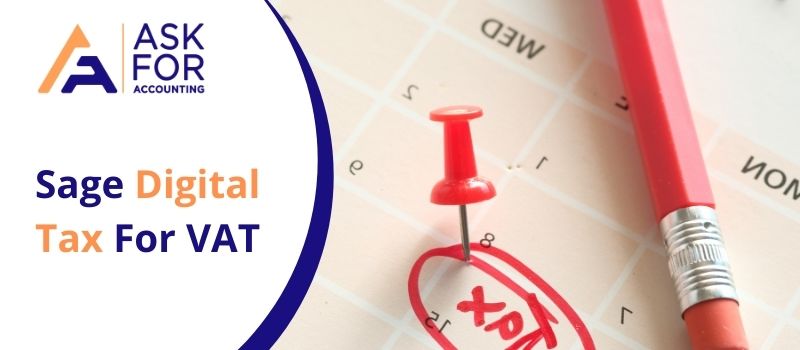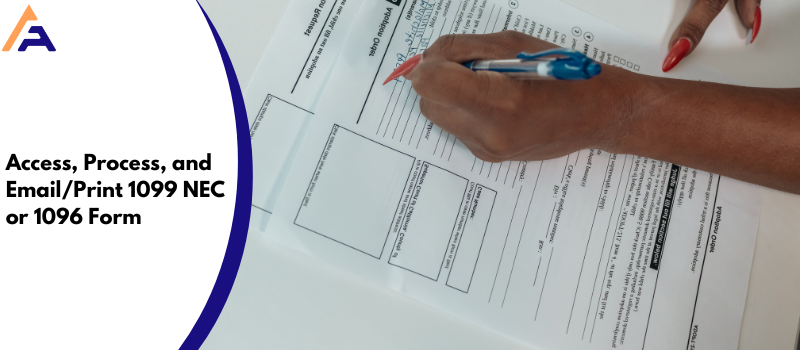In this article, we will show you how to create, fill, and record a GST or HST return into Sage 50 software. Taxes are charged on sales and recorded on expenses in accounting. Depending on your reporting period, you must submit this information at the end of each month, quarter, or year.
If the tax charged on sales is higher than the tax you have already paid, you must make a payment to the government; otherwise, you will be refunded the difference.
You must charge and collect these taxes from your consumers if your business is registered for GST or HST. Also, you must charge and collect those taxes if you have registered with the provincial tax authorities. You can do this in the sales tax settings if you haven’t yet given your tax registration number and specified a remittance frequency. Sales tax returns can be downloaded in PDF or CSV format as well.
Tips to Create the PST/QST Return into Sage 50
- Go to Tax Returns under Reporting. There is a separate tab for each province where you collect provincial sales tax.
- On the provincial tab, you have to click.
- Click a PST/QST Return should be made.
- Change the returns From and To dates as necessary.
- Click to calculate
- To complete the tax return, click Next. The provincial tax authority’s website has a copy-and-paste option for the sales tax values.
Tips to Create the GST or HST Return Into Sage 50
- Go to Tax Returns under Reporting. The GST/HST tab is corresponding to the CRA tab.
- Click Fill out a GST or HST Return.
- Change the returns from and to dates as necessary.
- Then you have to click Calculate
- The TAX file that you can upload to the CRA website can be downloaded when you click Next.
A Step-by-step Guide to Filling Out Your GST or HST Tax Return In Sage 50
To fill out the GST or HST return you should use the tax report and balance sheet.
- As Total Taxable Supplies on the GST or HST Return, enter the corrected taxable sales total from the GST report.
- The sum of the GST Payroll Deductions account and the GST or HST Charged On Sales account (from the balance sheet) should be added. Put this new sum in the GST/HST Return’s GST Collectible field.
- Fill in the total of the GST Charged On Sales account as the GST Collectible if you don’t have a GST or HST Payroll Deduction account.
- In the space provided on the return, enter the sum of the GST/HST Adjustments account.
- As the amount for the Input Tax Credit on the return, enter the total of the GST/HST Paid on the Purchases account.
- In the space provided on the return, you have to enter the ITC Adjustments account’s total.
- Calculating your refund or payment requires you to refer to the additional instructions on the form.
How to Successfully Filing GST or HST Returns Electronically in Sage 50
Using the GST/HST Internet File Transfer service provided by Sage 50 Accounting, submit your goods and services tax/harmonized sales tax (GST/HST) returns directly to the Canada Revenue Agency (CRA).
A few of the requirements for online filing GST or HST returns
If you satisfy all of the following requirements, you can submit your GST/HST using the Internet File Transfer service.
- Your personalized return’s working copy has a printed four-digit access code.
- You owe nothing, you have a refund of $50,000 or less, or there is no balance on your return.
- There is no money on line 111 of your return.
- A rebate application form is not required to be submitted with your return.
Steps to Filing GST or HST Returns Electronically
- You can visit the CRA website or get in touch with them directly to find out if you qualify for this service.
- Create an electronic copy of your return in Sage 50 Accounting and save it to your computer before filing your GST or HST return.
- Then, you have two options for filing your return
- Using Sage 50 Accounting or
- Uploading the file straight to the CRA website.
How to Record a GST or HST Refund in Sage 50: Step-By-Step Guide
Sage 50 Accounting encourages you to record an invoice in the Purchase journal (if you owe money) or in the Sales journal (if you are receiving a refund) after saving an electronic GST/HST return file on your computer. You have the option of recording the receipt or paying the invoice right away or later.
The entire amount is shown as an Adjustment Amount if any sums you provided in the GST or HST electronic form were not associated with an account. You must also choose an account in the Adjustment Account box to track this amount to keep proper records. If you have any questions regarding how to use this account or how to handle this sum, speak with your accountant. In a notice at the bottom of the GST/HST Online Filing form window, the total untracked amount is shown.
Record a GST or HST Refund
- Create a customer record for the government department that issues the refund if you still need to do so.
- Create a new sales invoice by
- Going to the Home window, then on the navigation pane you have to click Customers and Sales.
- You have to right-click the Sales Invoices icon then you have to select Invoice in the Task pane, and then from the menu, you have to select Create Invoice.
- Select the payment method:
- By Cash- You have to choose the bank account which the payment is taken from.
- By Cheque- You have to select the bank account which the payment is taken from. You have to enter a cheque number if different from the one displayed.
- Pay Later- If you have not yet received the refund then select this.
- Choose the appropriate government department from the Customer box.
- Type the total sales tax collected…
- Put the name of the tax you are collecting in the Item Description section.
- Enter the total sales tax charged as a negative number in the Amount column.
- Click the List button and the Finder button in the Account column.
- As soon as you have selected All Accounts and the Charged On Sales account, click Select.
- Please enter the total sales tax paid…
- Put the name of the tax you are collecting in the Item Description section.
- Enter the total amount of sales tax charged in the Amount field.
- Click the List button and the Finder button in the Account column.
- Ensure that All Accounts is selected, and then you select the <sales taxes> that is Paid on Purchases account, and then you have to click Select.
- For the remaining sales tax accounts you have to enter the amounts and account numbers if you have any.
- On the Report menu you have to choose Display Sales Transaction detail, to check the transaction. As a debit, the Accounts Receivable or bank account amount should be shown. ( This amount is owed to you by the government).
- Then you have to click Process.
- Create a receipt when you receive the refund if you have chosen Pay Later as a payment method.
Tips to Enter a GST or HST Refund in Sage 50 Cash-Basis Accounting Quickly
Follow the below steps to enter a GST or HST refund in Sage 50 cash-basis accounting quickly.
- Add a customer record for the Receiver General if you still need to do so.
- Then, with the Receiver General as the customer, you have to create a sales invoice.
- By going to the Home window, you have to click Customers and Sales on the navigation pane.
- Right-click the Sales Invoices icon in the Tasks pane and then select Invoice.
- From the menu, you have to select Create Invoice.
- In the Paid By box you have to select Pay Later.
- Then you have to enter an invoice number, for example:- GST/HST Q1 for the first quarterly GST or HST report, and then you have to enter the date.
- For all GST/HST accounts, you can enter the amounts and account numbers, as follows:
- Enter the corrected GST/HST Paid amount from the GST/HST report as a positive number, in the Amount box. Enter the GST/HST Paid on Purchase account number in the Account box.
- Then you have to enter the corrected GST or HST Charged amount from the GST/HST report as a negative number and then the GST/HST Charged on the Sales account number.
- Similarly, you have to enter the account balances and the account numbers that are listed on the Transaction By Account report for the remaining GST/HST accounts: the GST/HST Adjustments account, then the ITC Adjustments account, and then the GST/HST Payroll Deductions account(in case you have one).
As calculated on the GST or HST return the invoice total should be equal to your refund amount.
- Then you have to select Display Sales Transaction Detail to check the entry from the report menu. As a debit to the Bank account the amount the government owes you should be shown.
- To record the entry click Record. Until you record payment of the refund the amounts remain in the GST or HST accounts.
- Open the Receipts window and then enter a receipt for the Receiver General when you receive the refund cheque. To prepare for the next reporting period this removes the reported GST/HST amounts from the accounts.
If you want to verify that you have properly cleared the GST or HST accounts:
- In the temporary copy create a temporary copy of your company files and then switch to accrual-basis accounting.
- Print a balance sheet. In the temporary accrual-basis copy of your company files the GST/HST account balances should be zero, if you cleared the accounts properly. To see where the error occurred check the steps you took to adjust the GST/HST report if the balances are not zero.
Complete Guide to Enter a QST Refund in Sage 50 Cash-Basis Accounting Easily
Follow the below steps to enter a QST refund in Sage 50 cash-basis accounting quickly.
- Make a customer record for the Ministère du Revenu du Québec if you haven’t already.
- Open Customers in the Home window and then select the Create toolbar button.
- Type Ministère du Revenu du Québec in the Customer box.
- Set each tax’s Tax Exempt status to Yes by selecting the Taxes tab. Click the Save and Close button after that.
- Open Sales, Orders, and Quotes in the Home box and select the Ministère du Revenu du Québec as the client.
- Enter the date and invoice number, such as QST JUL for the July QST refund.
- For each QST account, enter the amounts and account numbers as mentioned below:
- Enter the revised Refundable QST Paid amount from the QST report as a positive number in the Amount box. Enter the Refundable QST Paid account number in the Account box.
- Enter the QST Charged At Rate 1 account number and the updated QST Charged At Rate 1 amount as a negative number on the next line.
- Enter the QST Charged At Rate 2 account number and the correct QST Charged At Rate 2 amount as a negative number on the next line.
- For the remaining QST accounts, the QST Adjustments account, the ITR Adjustments account, and the QST Payroll Deductions account enter the account balances and account numbers listed on the Transactions By Account report (if you have one).
As calculated on the QST Return, the invoice total should equal your refund amount.
- Select Display Sales Transaction Detail from the Report option to check the entry. Your account should reflect a debit for the amount the government owes you.
- To record the entry, you have to click Record. Keep in mind that the money is still in the QST accounts until you record the refund payment.
- Create a receipt from the Ministère du Revenu du Québec once you receive the refund check by opening the Receipts window. In order to make room for a new reporting period, this removes the QST amounts reported for this QST period from the accounts.
When making sure that the QST accounts have been correctly cleared:
- Change the accounting method in the temporary copy of company files to accrual-basis accounting.
- Get a balance sheet printed. The QST account balances in the temporary accrual-basis copy of your company data should be 0 if the accounts were cleared correctly. Check the procedures you took to modify the QST report and account for a refund if the balances are not zero to see where the error occurred.

